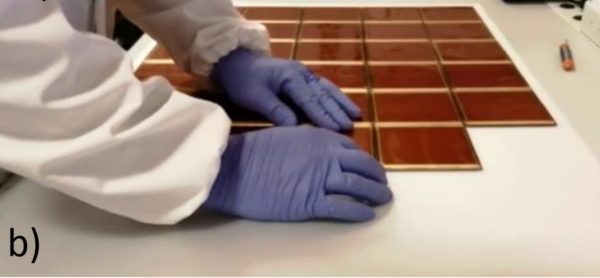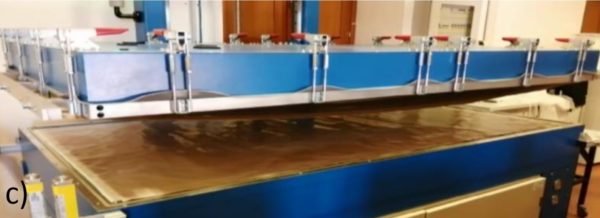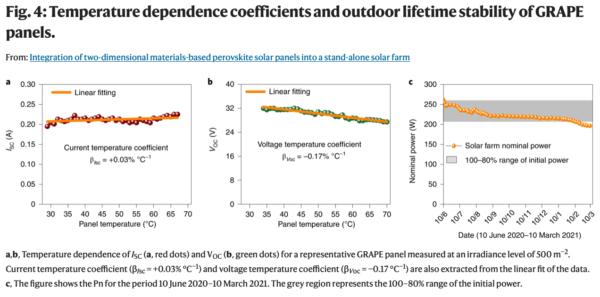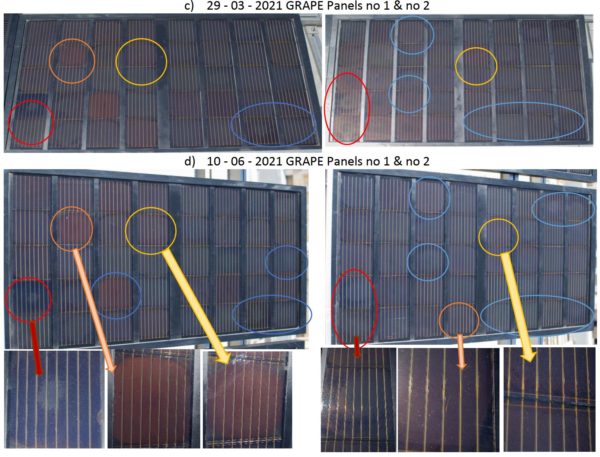M. Chikao and other researchers at Japan’s National Institute of Advanced Industrial Science & Technology first created an optical absorption layer utilizing a perovskite crystal structure in 1999. Nearly twenty five years later, researchers are still working to stabilize solar degradation.
This time around, researchers from multiple universities across the Mediterranean built and deployed a perovskite solar panel that lasted about nine months. The panels degraded approximately 25% from their original output, before experiencing a catastrophic encapsulation failure. This led to a mechanical panel failure, as the elements rapidly wore down the perovskites.

The paper, Integration of two-dimensional materials-based perovskite solar panels into a stand-alone solar farm, goes into detail on how the collaboration went about fully constructing nine 0.5 m2 perovskite solar panels. The panels were composed of 40 individual ‘modules’ (the authors use the term modules, we will use the term ‘cell’), with the array peaking at 261 watts of output, while individual cells ranged in output from 25 to 35 watts. The authors reported that the 360 solar cells, measured at 1 sun irradiation, were 12.5%±1.6 efficient.
The authors also provided a supplemental document that broke down all of the ingredients that go into making one of their solar panels, even including the electricity consumed in manufacturing, (approximately 11.25 kWh). The panels were named “GRAPE” because the “PE”rovskite was complemented by “GRA”phene.

After being deployed in June, the panel peaked above 250 watts of output – as can be seen in the lower right, image C. The panel saw an immediate drop in output, followed by a stable month, and then a slow, but fairly steady decrease in peak output – down 20% – going into January/February. At that point, output degradation sharply accelerated, and was followed by a total lamination failure, allowing for the ingress of oxygen and water.

The team suggests that the lamination failure was due to their use of the low temperature laminate (85 °C) chosen to seal solar cells within the panel frame. A low temperature laminate was chosen as a way to avoid damaging the temperature-sensitive perovskites in the lamination process, since the degradation of perovskites is accelerated at higher temperatures.
One very interesting observation is that output losses were roughly zero as temperatures increased to 50°C, and beyond. The author’s state, “contrary to many semiconductors, in which the optical band gap (EG) decreases almost linearly with the temperature increase associated with solar cell operation, halide perovskites have a positive correlation between the optical band gap and the temperature.”
The authors explain that gains resulting from the increased optical band gap were likely offset by a number of uncertain factors, which should be examined in future research. Generally, at 50°C, one would expect the efficiency of a silicon solar panel to be down 7.5-15% from its peak output.
The nine solar panels were deployed in Heraklion, Crete.

Nature Energy CC 4.0 JFW
This content is protected by copyright and may not be reused. If you want to cooperate with us and would like to reuse some of our content, please contact: editors@pv-magazine.com.









By submitting this form you agree to pv magazine using your data for the purposes of publishing your comment.
Your personal data will only be disclosed or otherwise transmitted to third parties for the purposes of spam filtering or if this is necessary for technical maintenance of the website. Any other transfer to third parties will not take place unless this is justified on the basis of applicable data protection regulations or if pv magazine is legally obliged to do so.
You may revoke this consent at any time with effect for the future, in which case your personal data will be deleted immediately. Otherwise, your data will be deleted if pv magazine has processed your request or the purpose of data storage is fulfilled.
Further information on data privacy can be found in our Data Protection Policy.